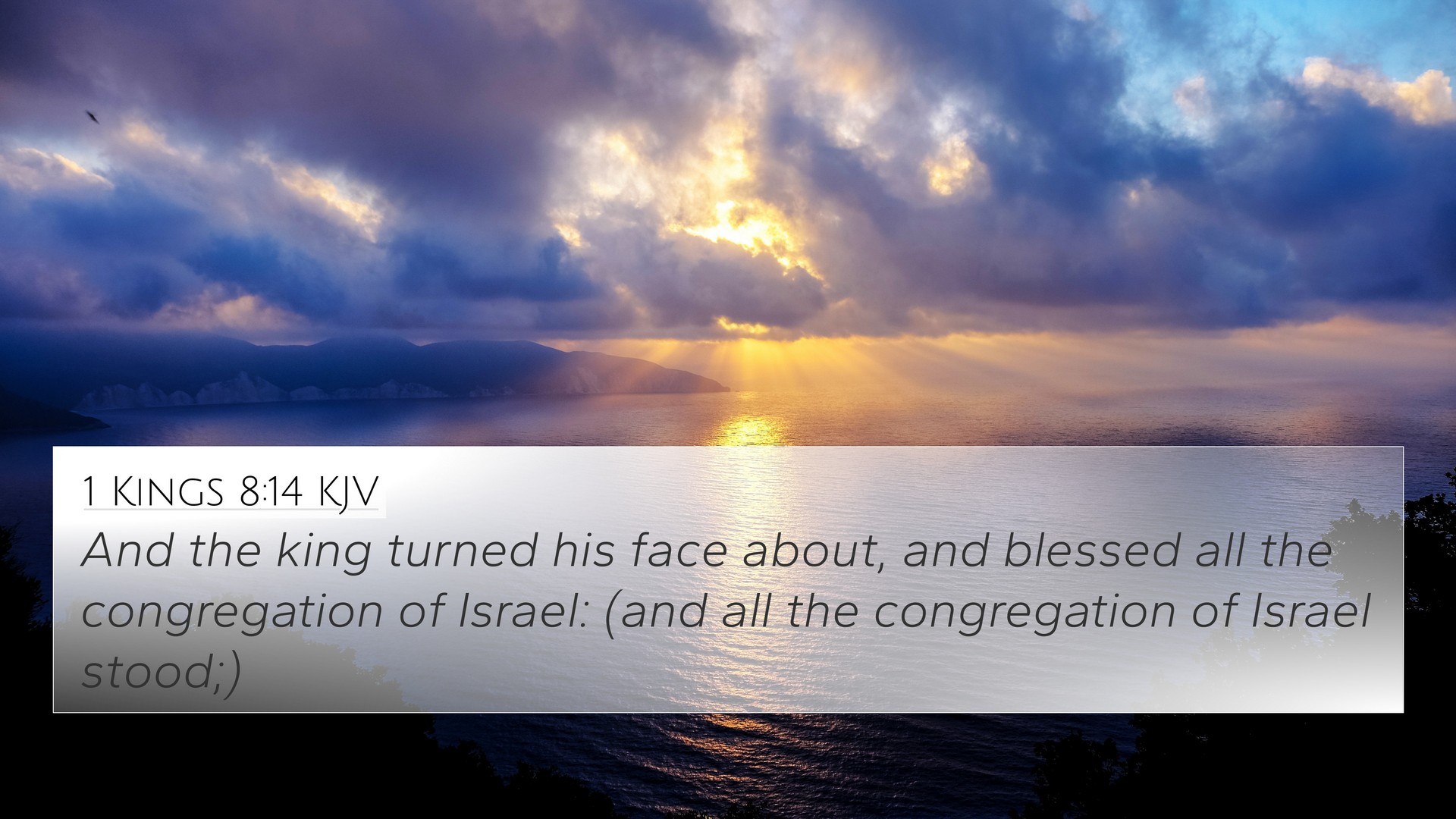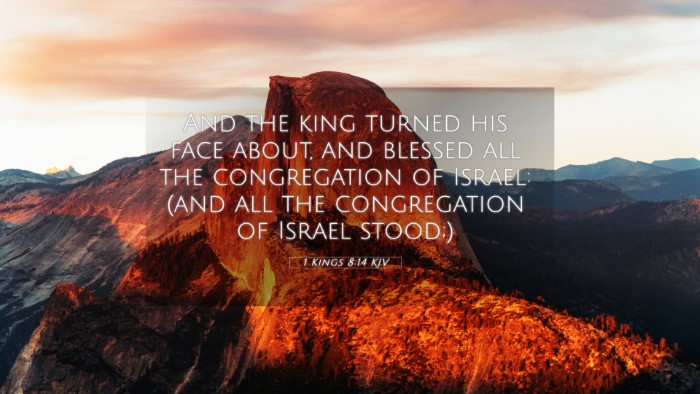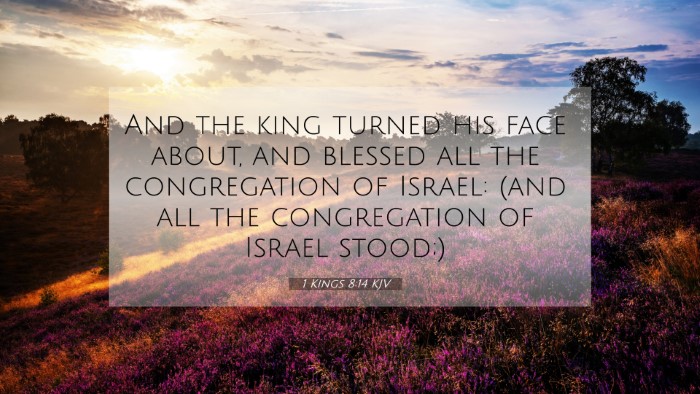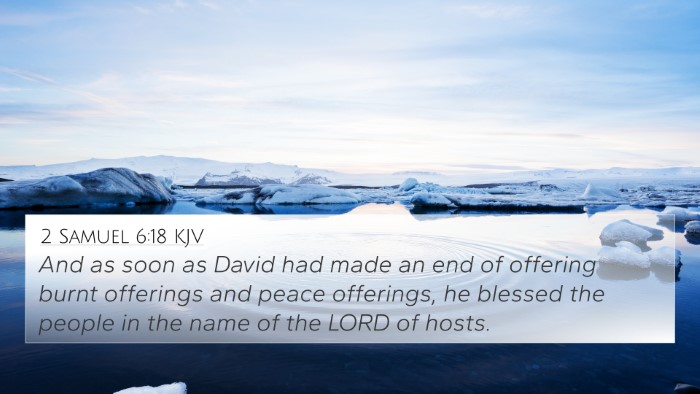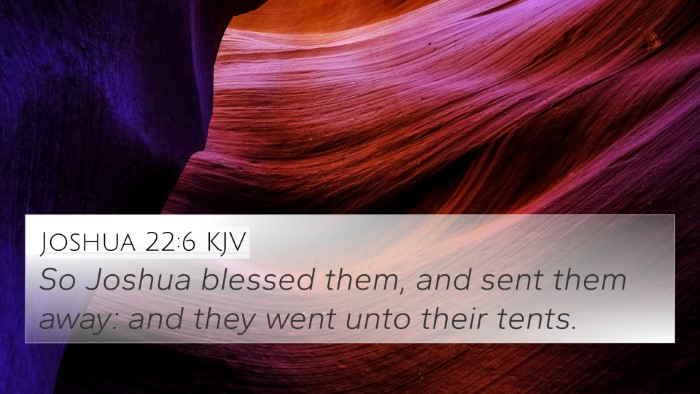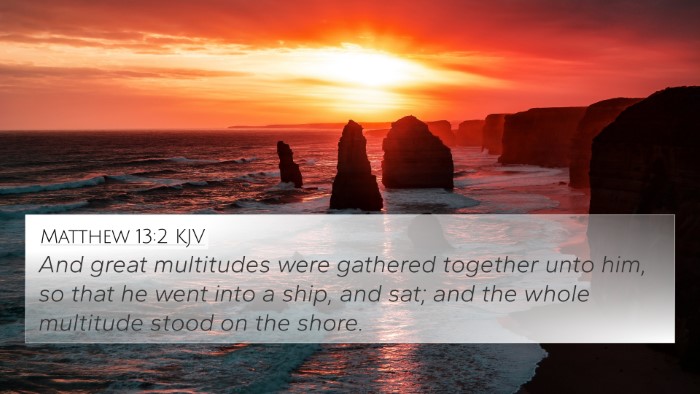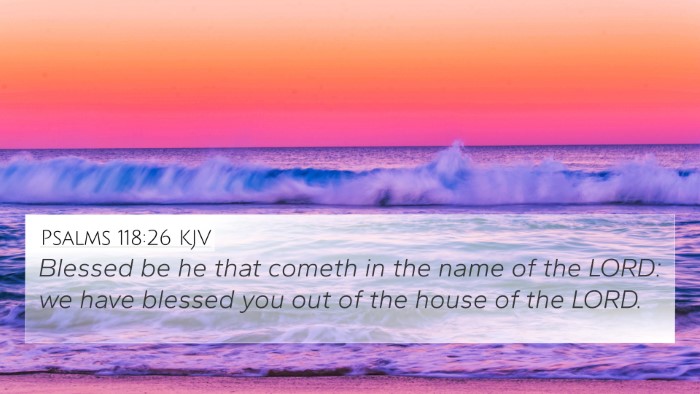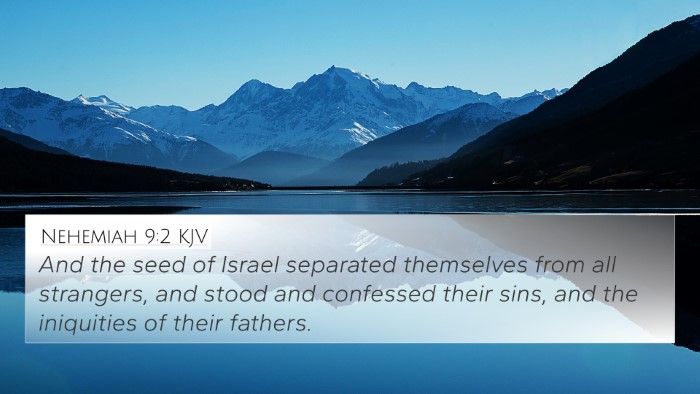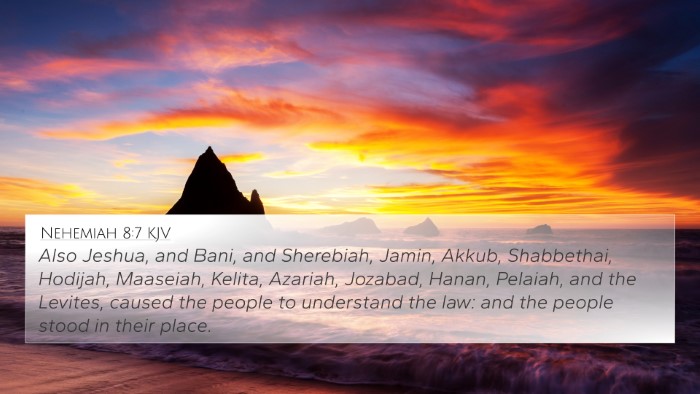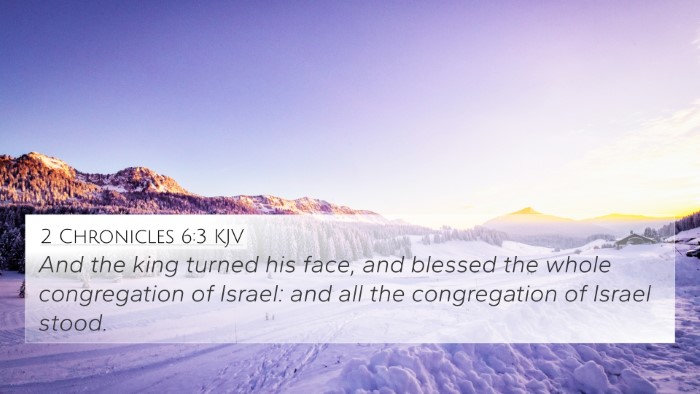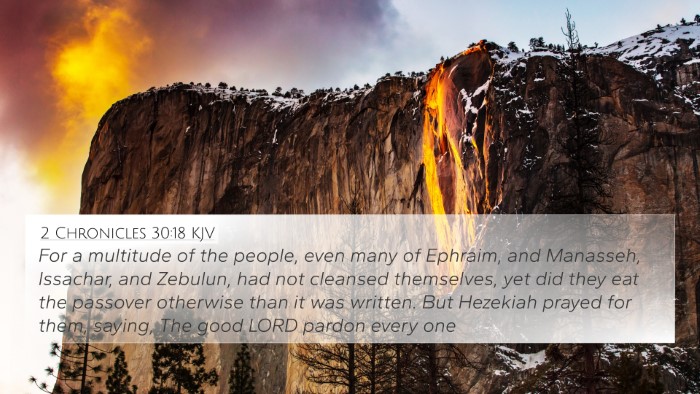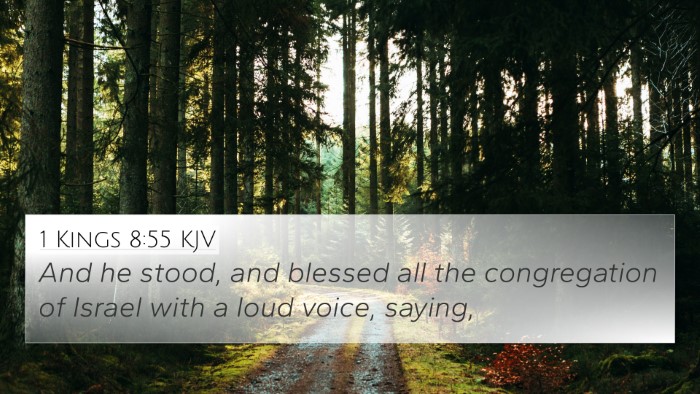Understanding 1 Kings 8:14
1 Kings 8:14 states: "And the king turned his face about, and blessed all the congregation of Israel: and all the congregation of Israel stood." This verse captures a significant moment during the dedication of the temple by King Solomon. It portrays the king's act of blessing the people after a momentous occasion, reflecting themes of leadership, reverence, and communal worship.
Meaning and Insights from Public Domain Commentaries
This passage has garnered various interpretations, providing substantial insights into its theological and historical significance. Below is a synthesis of thoughts from notable commentators:
-
Matthew Henry:
Henry emphasizes the importance of the royal blessing as a sign of God's favor towards the people. The act of turning his face conveys a personal connection and attention to the congregation, showcasing Solomon’s role not just as a ruler but as a spiritual leader who intercedes for the people.
-
Albert Barnes:
Barnes elaborates on the solemnity of the occasion, noting that this was a pivotal moment for Israel's national identity. The collective standing of the congregation signifies unity and respect for the king's authority as well as the divine presence in the temple being dedicated.
-
Adam Clarke:
Clarke points out the significance of the public blessing. He interprets the act as a ceremonial upliftment of the people, which reinforces the covenant between God and Israel. The communal aspect stresses that the congregation is spiritually engaged in this act, acknowledging God's guidance through their leader.
Theological Themes
This verse touches on several theological themes, including:
- Leadership and Blessing: The role of a leader in blessing the people underscores the importance of divine favor upon the community.
- Community Worship: The act of communal standing signifies unity and collective worship, reinforcing the idea that worship is not solitary but a shared experience.
- God's Presence: This moment illustrates the belief in God's tangible presence within the temple, creating a sacred space for worship and connection.
Cross-References
1 Kings 8:14 can be cross-referenced with several other scriptures that enhance understanding through thematic links:
- Deuteronomy 10:8 - The role of the Levites in transporting the Ark.
- 2 Chronicles 6:3 - Solomon's public acknowledgment of God and prayer for the congregation.
- Psalms 134:1-3 - A call for blessings from the temple and worship space.
- Matthew 5:1 - Jesus' position of authority while teaching from a mountain, similar to Solomon's positioning to bless.
- Hebrews 4:16 - The invitation to approach God’s throne with confidence, paralleling the communal approach in worship.
- Luke 14:10 - The act of honoring others before taking a seat, reflective of the humility in leadership.
- Acts 2:1-4 - The gathering of believers to receive the blessing of the Holy Spirit, similar in communal worship intent.
Connections Between Bible Verses
In exploring the connections between Bible verses, we can see how 1 Kings 8:14 relates to overall Biblical themes:
- Thematic Bible Verse Connections: The expression of blessing throughout scripture is often tied to moments of worship and covenant renewal.
- Inter-Biblical Dialogue: The dedication of the temple echoes later New Testament references to God's dwelling among His people, highlighting continuity in God’s relational desire.
- Comparative Bible Verse Analysis: Many scripture passages offer insights into the relationship between God, His leaders, and His people, linking back to the themes showcased in Solomon's reign.
Conclusion
1 Kings 8:14 serves as a significant moment that encapsulates leadership, community commitment, and divine connection within Israel’s history. By understanding this verse through public domain commentaries and associated cross-references, readers can grasp a more profound theological meaning and its application to communal worship today.
For those studying this verse, various tools for Bible cross-referencing can deepen understanding of its context and implications:
- Utilizing a Bible concordance to locate similar themes.
- Employing a Bible cross-reference guide for structured study.
- Engaging in cross-reference Bible study to discover how different texts interact.
As we venture into the rich tapestry of scripture, recognizing the connections between Bible verses enhances our comprehension and appreciation of God's narrative through history.
